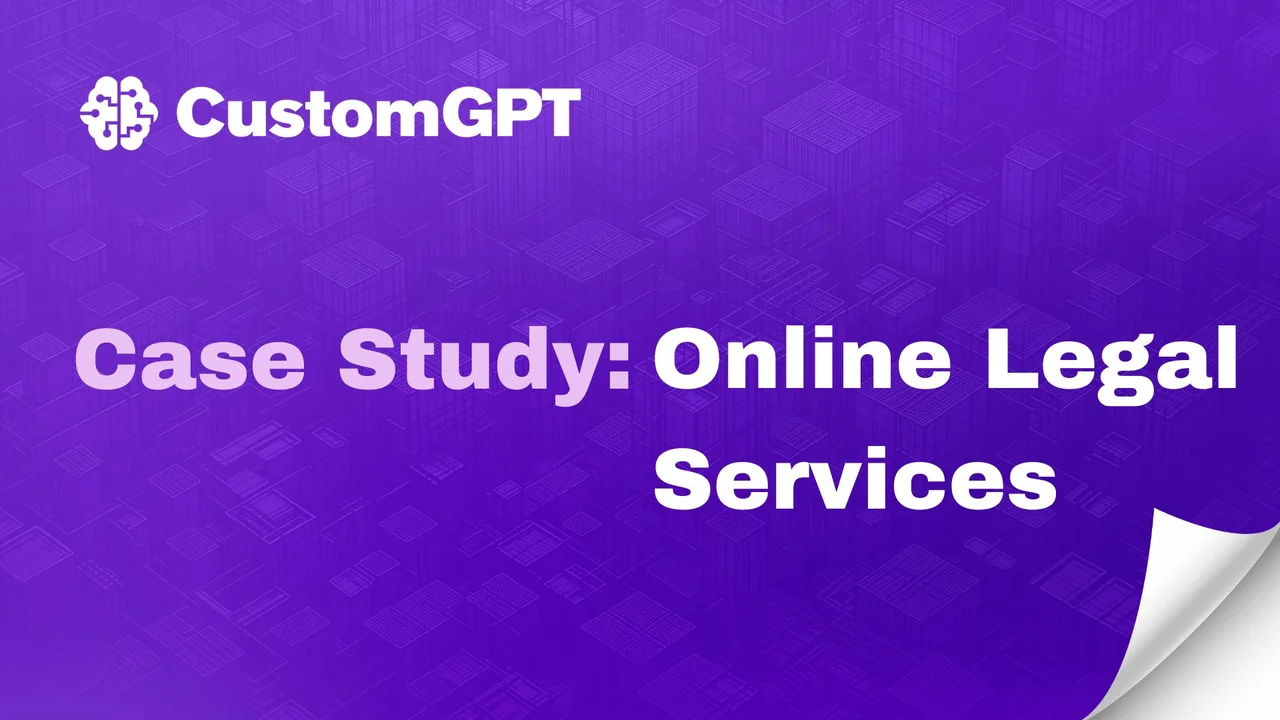Best Smart Home Inventory Apps for Insurance
Learn about smart apps that help seniors create home inventories for insurance purposes.

Learn about smart apps that help seniors create home inventories for insurance purposes.
Best Smart Home Inventory Apps for Insurance
Hey there! Let's talk about something super important for every homeowner, especially as we get a little older: protecting your stuff. We're not just talking about locking your doors, but making sure that if something unexpected happens – like a fire, flood, or even a break-in – you're fully prepared to deal with your insurance company. That's where smart home inventory apps come in. These aren't just fancy gadgets; they're incredibly practical tools that can save you a ton of headache and potentially a lot of money down the line.
Think about it: could you list every single item in your home right now? From your grandmother's antique vase to your new smart TV, your collection of books, or even the tools in your garage? Most of us can't, and that's perfectly normal. But when you need to file an insurance claim, having a detailed, organized list of your belongings, complete with photos and even purchase receipts, makes the whole process so much smoother. It helps you get a fair settlement and ensures you don't forget anything valuable.
These apps are designed to make this daunting task easy and even a little bit fun. They guide you through the process, help you categorize items, and store all your information securely. Plus, many of them offer cloud storage, so even if your physical home is affected, your inventory is safe and sound. Let's dive into some of the best options out there, compare their features, and see which one might be the perfect fit for you.
Why a Digital Home Inventory is a Must Have for Seniors and Homeowners
You might be thinking, 'I've got a good memory, I'll remember what I own.' Or maybe, 'I've got a paper list somewhere.' While those are good starts, a digital home inventory offers benefits that traditional methods just can't match. For seniors, in particular, the ease of use and accessibility of these apps are game-changers.
Streamlined Insurance Claims and Faster Settlements
This is probably the biggest reason. When you have a detailed inventory, you can quickly provide your insurance company with all the necessary information. This means less back-and-forth, fewer delays, and a faster payout. Imagine trying to recall every item in a smoke-damaged room – it's incredibly stressful. With an app, you just pull up your list, and everything's there.
Accurate Valuation and Maximizing Your Claim
Without a proper inventory, it's easy to undervalue your belongings or forget about items entirely. These apps allow you to input purchase dates, prices, and even attach receipts, ensuring you get the full value for your lost or damaged items. This is crucial for maximizing your insurance claim and getting what you're truly owed.
Peace of Mind and Reduced Stress
Knowing that your belongings are documented and easily accessible provides immense peace of mind. In the event of a disaster, you'll have one less thing to worry about. This is especially important for seniors who might find the claims process overwhelming.
Beyond Insurance: Estate Planning and Downsizing Benefits
While insurance is the primary focus, a home inventory app can also be incredibly useful for estate planning. It provides a clear record of assets for your loved ones. If you're considering downsizing, it can help you decide what to keep, sell, or donate, making the process much more organized.
Key Features to Look for in a Home Inventory App for Seniors
Not all apps are created equal, especially when considering ease of use for seniors. Here are some crucial features to prioritize:
User Friendly Interface and Intuitive Navigation
This is paramount. The app should be easy to understand and navigate, with clear buttons and simple workflows. Large fonts and uncluttered screens are a plus. You shouldn't need a tech expert to figure it out.
Robust Photo and Video Capabilities for Visual Documentation
A picture is worth a thousand words, especially for insurance. The app should allow you to easily take and upload multiple photos and even short videos of your items. This visual proof is invaluable.
Receipt and Document Storage for Proof of Ownership
Being able to attach digital copies of receipts, warranties, and appraisals directly to each item is a huge time-saver and provides undeniable proof of ownership and value.
Cloud Storage and Secure Data Backup for Disaster Recovery
Your inventory needs to be safe even if your home isn't. Look for apps that offer secure cloud storage and automatic backups. This ensures your data is always accessible, no matter what happens.
Customizable Categories and Room Organization for Easy Sorting
The ability to organize items by room, category (e.g., electronics, jewelry, furniture), or even custom tags helps keep your inventory neat and searchable.
Export Options for Insurance Companies and Personal Records
Can you easily export your inventory as a PDF, spreadsheet, or other common format? This makes sharing with your insurance agent straightforward.
Customer Support and Help Resources for Assistance
Good customer support, whether through in-app tutorials, FAQs, or direct contact, is always a good sign, especially if you're new to using these types of apps.
Top Contenders: Best Home Inventory Apps for Seniors and Homeowners
Alright, let's get to the good stuff! Here are some of the most popular and highly-rated home inventory apps that are particularly well-suited for seniors, along with their pros, cons, and pricing.
1. Sortly: Visual Inventory Management for Home and Business
Sortly is known for its incredibly visual and intuitive interface, making it a fantastic choice for anyone who prefers to see their inventory at a glance. It's often praised for its ease of use and excellent photo capabilities.
Key Features and Benefits of Sortly
- Visual Inventory: Sortly emphasizes photos, allowing you to quickly identify items. You can add multiple photos per item.
- QR Code Generation: This is a unique feature. You can print QR codes for boxes or items and scan them with the app to instantly see what's inside. Great for moving or storage!
- Customizable Folders: Organize your items by room, category, or even specific boxes.
- Cloud Sync: Your data is securely stored in the cloud and accessible from multiple devices.
- Reporting: Generate reports of your inventory, which can be useful for insurance purposes.
- User-Friendly Design: The drag-and-drop interface is very easy to learn.
Use Cases and Scenarios for Sortly
Sortly is excellent for general home inventory, especially if you have a lot of items you want to visually track. It's also fantastic for organizing during a move or for keeping track of items in storage units. For insurance, the visual aspect helps you quickly identify and document losses.
Pricing and Availability of Sortly
- Free Plan: Offers limited items (up to 100) and one user. Good for trying it out.
- Advanced Plan: Starts around $39/month (billed annually) for up to 2,000 items, multiple users, and more features.
- Ultra Plan: For larger inventories, starting around $99/month (billed annually).
Pros: Extremely visual, easy to use, QR code feature is unique and helpful, great for organizing.
Cons: Can get pricey for larger inventories, some advanced features might be overkill for basic home inventory.
2. Home Contents: Simple and Effective Home Inventory Management
Home Contents is a straightforward app designed specifically for home inventory. It focuses on simplicity and efficiency, making it a good choice for those who don't need a lot of bells and whistles but want a reliable way to document their belongings.
Key Features and Benefits of Home Contents
- Simple Interface: Very easy to navigate, even for first-time users.
- Room-Based Organization: Easily categorize items by the room they are in.
- Photo and Receipt Uploads: Attach photos and digital receipts to each item.
- Detailed Item Information: Record purchase date, value, serial numbers, and descriptions.
- Export Options: Generate PDF or spreadsheet reports for insurance claims.
- Data Backup: Offers options for backing up your data, often to cloud services like Dropbox or Google Drive.
Use Cases and Scenarios for Home Contents
This app is ideal for creating a comprehensive insurance inventory without unnecessary complexities. It's perfect for seniors who want a no-fuss solution to document their possessions for peace of mind and potential claims.
Pricing and Availability of Home Contents
- One-time Purchase: Often available as a one-time purchase app (e.g., around $4.99 - $9.99, depending on platform). This can be a great value compared to subscription models if you only need basic features.
Pros: Very affordable (often one-time fee), simple and intuitive, good for basic insurance inventory.
Cons: Less feature-rich than some competitors, may not have advanced organizational tools like QR codes or extensive reporting.
3. Encircle: Professional Grade Property Documentation for Homeowners
Encircle is often used by insurance adjusters and restoration companies, but they also offer a version for homeowners. This means it's built with robust documentation in mind, offering very detailed reporting and high-quality photo/video capabilities. It's a more powerful tool, perhaps for those with more extensive or valuable collections.
Key Features and Benefits of Encircle
- High-Quality Photo and Video Capture: Designed for detailed visual documentation, often with features like 360-degree photos.
- Detailed Room-by-Room Documentation: Excellent for capturing the condition of entire rooms before and after an event.
- Comprehensive Reporting: Generates professional-grade reports that are highly accepted by insurance companies.
- Cloud-Based Platform: Securely stores all your data in the cloud.
- Collaboration Features: While more for professionals, it can allow for easy sharing of documentation if needed.
Use Cases and Scenarios for Encircle
Encircle is excellent for creating a highly detailed, professional-level inventory, especially if you have a large home, valuable collections, or want to document the condition of your property for insurance or even rental purposes. It's also great for pre-loss documentation of specific areas or items.
Pricing and Availability of Encircle
- Free Tier: Encircle often offers a free tier for personal use with limited features.
- Paid Plans: Their professional plans are subscription-based and can be quite expensive (hundreds of dollars per month), but the free or lower-tier personal plans are what homeowners would typically use. Check their website for current personal use pricing, as it can vary.
Pros: Extremely detailed documentation, professional-grade reports, excellent for visual evidence.
Cons: Can be more complex to use than simpler apps, free tier might be limited, paid plans are geared towards professionals.
4. Nest Egg: Inventory and Collection Management with Barcode Scanning
Nest Egg is a versatile inventory app that goes beyond just insurance. It's great for managing collections, tracking warranties, and even keeping tabs on items you've lent out. Its barcode scanning feature is a real time-saver.
Key Features and Benefits of Nest Egg
- Barcode Scanning: Scan barcodes on items to automatically pull in product information, saving you typing time.
- Warranty Tracking: Keep track of purchase dates and warranty expiration dates for your electronics and appliances.
- Lending Tracker: Remember who you've lent items to.
- Detailed Item Fields: Add photos, notes, purchase price, location, and more.
- Cloud Sync: Syncs your data across devices.
- Customizable Categories: Organize your items in a way that makes sense to you.
Use Cases and Scenarios for Nest Egg
Nest Egg is perfect for homeowners who want a comprehensive inventory not just for insurance, but also for general home management. If you have a lot of electronics, appliances, or collections, the barcode scanning and warranty tracking features are incredibly useful.
Pricing and Availability of Nest Egg
- One-time Purchase: Often available as a one-time purchase app (e.g., around $4.99 - $9.99).
Pros: Barcode scanning is a huge time-saver, good for general home management beyond just insurance, affordable.
Cons: Interface might be slightly less intuitive than Sortly for some, primarily focused on individual items rather than room-by-room documentation.
5. MyStuff2: Comprehensive Inventory for Everything You Own
MyStuff2 is another robust inventory app that allows you to track virtually anything you own. It's highly customizable and offers a wide range of fields for detailed item information, making it suitable for extensive inventories.
Key Features and Benefits of MyStuff2
- Highly Customizable Fields: Add as much or as little detail as you want for each item.
- Multiple Photos and Videos: Attach extensive visual documentation.
- Location Tracking: Specify where each item is located within your home.
- Lending and Borrowing Tracking: Keep tabs on items you've lent or borrowed.
- Reporting and Export: Generate detailed reports for insurance or personal use.
- Cloud Sync: Syncs data across devices via iCloud or Dropbox.
Use Cases and Scenarios for MyStuff2
MyStuff2 is great for detailed home inventories, especially if you have a diverse range of items and want to record a lot of specific information for each. It's also good for collectors or anyone who wants a very granular level of detail in their inventory.
Pricing and Availability of MyStuff2
- One-time Purchase: Typically a one-time purchase app (e.g., around $9.99 - $19.99).
Pros: Very customizable, detailed item tracking, good for extensive inventories.
Cons: Can feel a bit overwhelming due to the sheer number of options, interface might not be as modern as some newer apps.
How to Get Started with Your Home Inventory App: A Step by Step Guide for Seniors
Okay, you've picked an app. Now what? Don't worry, it's not as hard as it sounds. Here’s a simple plan to get your home inventory up and running:
Step 1: Download and Set Up Your Chosen App
First things first, download the app from your device's app store (Apple App Store for iPhones/iPads, Google Play Store for Android). Once installed, open it up and follow the initial setup instructions. This usually involves creating an account and perhaps setting up cloud sync.
Step 2: Start Room by Room for Organized Documentation
Don't try to do your whole house at once! That's a recipe for feeling overwhelmed. Pick one room, like your living room or bedroom, and focus on that. Go through it systematically.
Step 3: Capture Photos and Videos of Your Valuables
For each item, especially valuable ones, take clear photos from different angles. If the app allows, take a short video, especially for electronics or appliances to show they are working. Get close-ups of serial numbers, brand names, and any unique features.
Step 4: Input Detailed Item Information and Purchase Data
For each item, enter as much detail as you can. This includes:
- Item Name: Be specific (e.g., 'Samsung 55-inch Smart TV' instead of just 'TV').
- Description: Add any unique features, condition, or sentimental value.
- Purchase Date: Even an approximate date is better than none.
- Purchase Price: This is crucial for insurance.
- Serial Number: Especially for electronics and appliances.
- Location: Which room is it in?
- Category: Electronics, furniture, jewelry, etc.
Step 5: Attach Receipts and Important Documents Digitally
If you have physical receipts, take a photo of them and attach them to the corresponding item. For digital receipts, you can often upload them directly. This is vital proof of purchase and value.
Step 6: Regularly Update Your Inventory for Accuracy
Your home isn't static, and neither should your inventory be. Whenever you buy a new significant item, sell something, or get rid of an old appliance, take a few minutes to update your app. A quick annual review is also a good idea.
Tips for Maximizing Your Home Inventory for Insurance Claims
Beyond just listing items, here are some pro tips to make your inventory truly effective for insurance purposes:
Documenting High Value Items and Collections
For jewelry, art, antiques, or other high-value items, consider getting professional appraisals. Scan and attach these appraisals to the item's entry in your app. Take extra detailed photos and videos of these items.
Capturing Room Overviews and Structural Details
Before you start itemizing, take a few wide-angle photos or a video of each room. This helps document the overall condition of the room and its contents. Also, consider documenting structural features like flooring, built-in cabinets, or unique architectural elements, especially if they are high-value.
Storing Your Inventory Securely Offsite and in the Cloud
Always use an app that offers cloud storage. This means your data is safe even if your physical devices are damaged. If your app allows, also export a copy of your inventory to an external hard drive or a secure email account periodically.
Reviewing and Updating Your Inventory Annually
Set a reminder to review your inventory once a year. This is a good time to add new purchases, remove items you no longer own, and update values if necessary. A good time might be around your birthday or when you renew your home insurance policy.
Communicating with Your Insurance Provider About Your Inventory
Let your insurance agent know you have a detailed home inventory. Some providers might even offer discounts or have specific recommendations for how to best document your belongings. In the event of a claim, you'll be able to provide them with a comprehensive report quickly.
Common Questions About Home Inventory Apps for Seniors
Let's tackle some common questions you might have about using these apps.
Are these apps difficult for seniors to use?
Not at all! Many of the apps we discussed, like Sortly and Home Contents, are designed with user-friendliness in mind. They have intuitive interfaces, clear instructions, and often offer visual cues that make them easy to navigate. If you can take a photo with your smartphone, you can use these apps.
What if I don't have all my receipts?
That's perfectly fine. While receipts are ideal, they're not always available. For items without receipts, estimate the purchase date and value as best you can. Photos are still incredibly valuable proof of ownership. You can also use bank statements or credit card records to help verify purchases.
How often should I update my home inventory?
It's a good idea to update your inventory whenever you make a significant purchase or get rid of a valuable item. Beyond that, a quick annual review is highly recommended. Think of it like a yearly check-up for your belongings.
Is my data safe in the cloud?
Reputable home inventory apps use secure cloud storage providers and encryption to protect your data. Always choose an app from a well-known developer and read their privacy policy if you have concerns. The security offered by these services is generally far superior to keeping paper records that could be lost or destroyed.
Can I use these apps for more than just insurance?
Absolutely! Many users find them helpful for general organization, tracking warranties, managing collections, or even for estate planning. They're versatile tools that can simplify various aspects of home management.
Final Thoughts on Smart Home Inventory for Peace of Mind
Creating a home inventory might seem like a big task, but with the right smart app, it becomes surprisingly manageable. It's an investment of your time that pays off immensely in terms of peace of mind and financial security. For seniors, having this organized documentation can significantly reduce stress during an already difficult time, ensuring that your cherished belongings are properly accounted for and that you receive a fair settlement from your insurance company.
So, take the plunge! Pick an app that feels right for you, start with one room, and gradually build your comprehensive home inventory. You'll be glad you did. It's one of the smartest steps you can take to protect your home and everything in it.
:max_bytes(150000):strip_icc()/277019-baked-pork-chops-with-cream-of-mushroom-soup-DDMFS-beauty-4x3-BG-7505-5762b731cf30447d9cbbbbbf387beafa.jpg)





